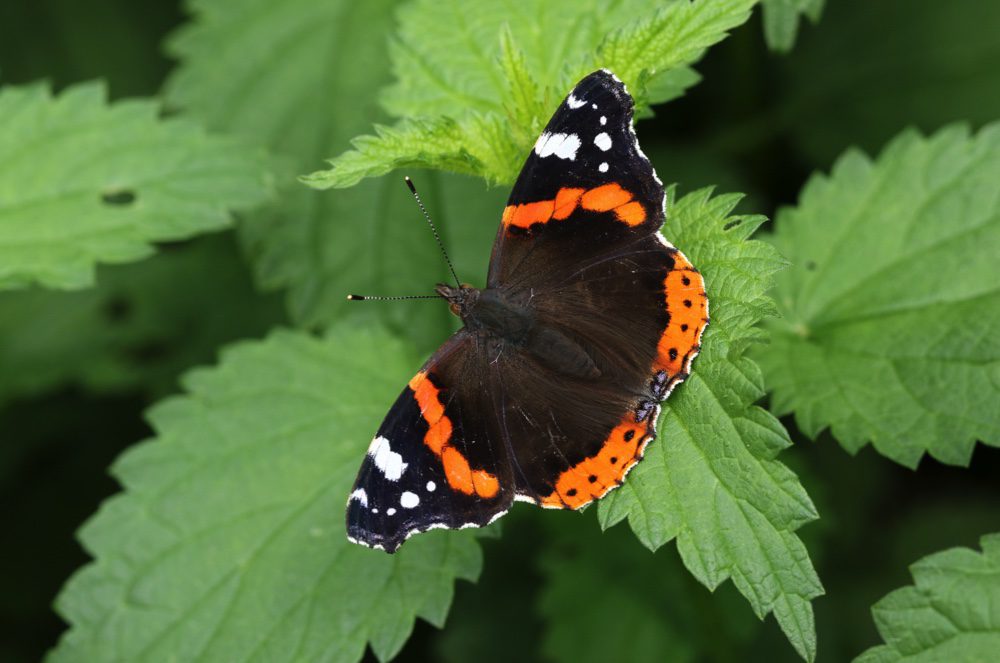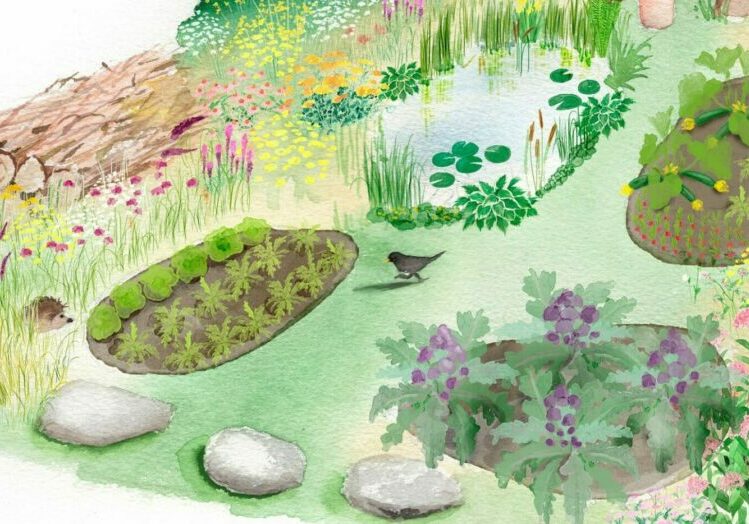1. Feed feathered friends
Bird feeders are a fantastic, easy way to attract more of these winged visitors to your back garden. Invest in a dedicated bird feeder (either plastic or mesh) or a roofed bird table if you can, and try filling it with sunflower hearts and soaked sultanas, raisins or currants in the spring months. Upgrade your feeder with a base tray: not only does it catch falling food, but it also gives birds extra space to perch and feed from. As summer advances, reduce the amount of food you put out, and avoid putting out any high-fat foods – such as suet balls and peanuts – until winter.
Difficulty: Easy
Space: Any outdoor space


2. Help hungry ’hogs
Britain’s rural populations of hedgehogs have fallen by up to 50% in the last two decades. But evidence suggests they’re faring better in urban areas, meaning our gardens are a vital refuge for these vulnerable mammals. Why not create a feeding station to help our prickly neighbours? You’ll need a wooden or plastic box with a removable lid, and a safe, sheltered spot in your garden that hedgehogs can reach. Each evening, place out shallow bowls of water and small amounts of hedgehog-friendly food such as dog or cat food, then clear it away in the morning. Don’t feed hedgehogs bread or milk – both are bad for them.
Difficulty: Easy
Space: Gardens of any size
3. Sow sunflowers
Not only do these easy-growing giant yellow flowers brighten up our outdoor spaces, but bees and butterflies love to feed on their nectar and the seeds are a favourite for garden birds. Pick a warm, sheltered spot and sow your seeds into a pot (this keeps them safe from snails and slugs), then plant your flowers in the ground later on in the season when they reach around 30cm tall. As they keep growing, you may need to secure them to canes to stop them blowing over. Make sure to keep them well-watered over the summer.
Difficulty: Easy
Space: Any outdoor space


4. Reptile refuge
As cold-blooded creatures, reptiles depend on heat in the environment to regulate their body temperature. To give slow worms and other reptiles emerging from winter hibernation a helping hand, why not create a sunbed in your back garden? Use a corrugated roofing sheet for your cover (the shape gives reptiles space to move underneath). Cut the sheet to about 1m x 1m, add a handle for lifting, then put it in a sunny, quiet spot. It might be tempting to keep checking for visitors, but it’s best to limit disturbances to once a week. When you do check it, approach it quietly and carefully, and look out for lizards resting on top.
Difficulty: Medium
Space: Gardens of any size
Green gardening all year round!
Visit the Save Our Wild Isles website to download a guide that will help you make wildlife welcome throughout the seasons.
5. Dig for diversity
Our back gardens are often flat and uniform, unlike the undulating landscapes found in nature. But by simply digging a shallow ditch, you can mimic these natural features and diversify your back garden to create wildlife-friendly space. You’ll need enough space to make it at least a metre wide – bigger if you can – and ideally somewhere nice and shady. Dig your ditch about 30cm deep, with gently sloped sides to allow wildlife to climb in and out. To create another microhabitat, leave your excavated diggings on the side of the ditch and scatter a wildflower seed mix.
Difficulty: Medium
Space: Larger gardens


6. Heap haven
Don’t let your kitchen and garden scraps go to waste – by creating a compost heap, you can use them to fuel a refuge for insects, toads, grass snakes and small mammals. You can either buy a ready-made bin or make your own from wooden pallets – slatted wood is ideal as it allows wildlife to climb in and out. To feed your heap, alternate green materials (such as grass clippings, weeds and vegetable peel) with brown material (such as sticks, wood chippings and cardboard), and keep it watered during dry spells. Don’t put meat, dairy products or cooked food on it.
Difficulty: Medium
Space: Gardens of any size
7. Butterfly booster
Butterflies are important pollinators and indicators of a healthy ecosystem, but 80% of the UK’s species have decreased in the last 50 years. The good news is that by growing the right plants – in a garden, on a balcony or in a window box – we can all help to boost the butterfly population. Adult butterflies will only lay their eggs on one or two types of plants, and caterpillars are very particular eaters, so it’s a good idea to check which butterflies live in your area so you can grow the right plants for these local species. If you have a large garden, try growing a nettle patch that can feed red admiral, small tortoiseshell, peacock and comma caterpillars.
Difficulty: Medium
Space: Any outdoor space


8. Aim high
Climbing plants add life and colour to otherwise dull walls or plain fences, and they help wildlife at the same time. Once you’ve picked a location, you’ll need to work out what kind of plants will flourish there based on factors such as height, the direction the surface is facing. and whether your plant is in a pot or a flowerbed. If you can fix a trellis, wisteria thrives in spacious sunny spots on house walls, while common jasmine is a great pick for garden walls or fences. Self-clinging climbers – such as Boston ivy – work well in shady spots, while some clematis species are great for pergolas.
Difficulty: Medium
Space: Any outdoor wall, fence or structure
ALL IMAGES © GETTY IMAGES
Take more action
Add your voice to the People’s Plan For Nature to call for urgent action to save our wild isles, now and for future generations.
More to explore

Planting for pollinators
We can’t live without bees, but in the UK they’re being pushed to the brink. So this summer let’s make every garden an oasis for pollinators

